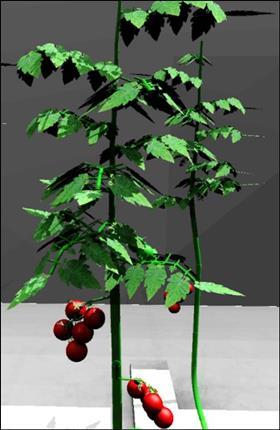
Imagine a computer simulator that could tell you which crop varieties to plant on your farm without having to go through the lengthy process of trialling different breeds that are destined to fail.
That’s exactly what researchers at Wageningen University in the Netherlands are aiming for with the development of “virtual twin” crops that will provide accurate simulations of how different inputs affect the plant. This will give growers unparalleled opportunities to experiment without wasting real crops.
Head researcher Jochem Evers says the digital tomato “twin” can simulate a huge range of crop inputs and changes, from plant structure to light levels, by using state-of-the-art sensor technology. The simulation can then create accurate predictions of how different growing strategies affect the crop, even forecasting profitability.
“Imagine running a couple of pruning strategies using the twin based on the current crop state, and using this information to perform the actual treatment on the crop – which then flows back into the twin as the changed state of the plants are monitored all the time,” Evers says.
“Another application we will test is to use the twin to do virtual testing of tomato varieties. This approach will allow us to test a range of different varieties, which do not even need to exist in reality. The importance of certain plant traits can be tested, potentially informing breeding programmes. The twin will provide unprecedented opportunities to do explorations virtually, and use that to make well-substantiated real-life decisions.”
Evers says that while digital twins are not a new concept, they haven’t previously been employed in the fresh produce industry. “The idea of recreating a virtual copy of an existing tomato crop, including its environment, and improving its predictive power as the real crop grows, has quite some potential for decision support in greenhouse crop growth.”
Key to the idea is that the virtual twin remains connected to its real-life equivalent, allowing growers to make the best-informed decisions as the crop matures. “The idea of our digital twin ‘virtual tomato crops’ is that a simulation model of a tomato crop in a greenhouse is constantly updated with new information on the growth and development of the real part of the twin. This includes the greenhouse conditions, plant structure, photosynthesis etc using state-of-the-art sensor technology.
“The virtual plants and greenhouse are simulated in 3D, and the output of the model consists of crop productivity, resource efficiency (energy, water, nutrients), and economic profit, among others. We will develop control algorithms that automatically adjust greenhouse climate settings and crop inputs based on the simulations. This affects the real crop, closing the loop as the real crop provides the data for the model.”



